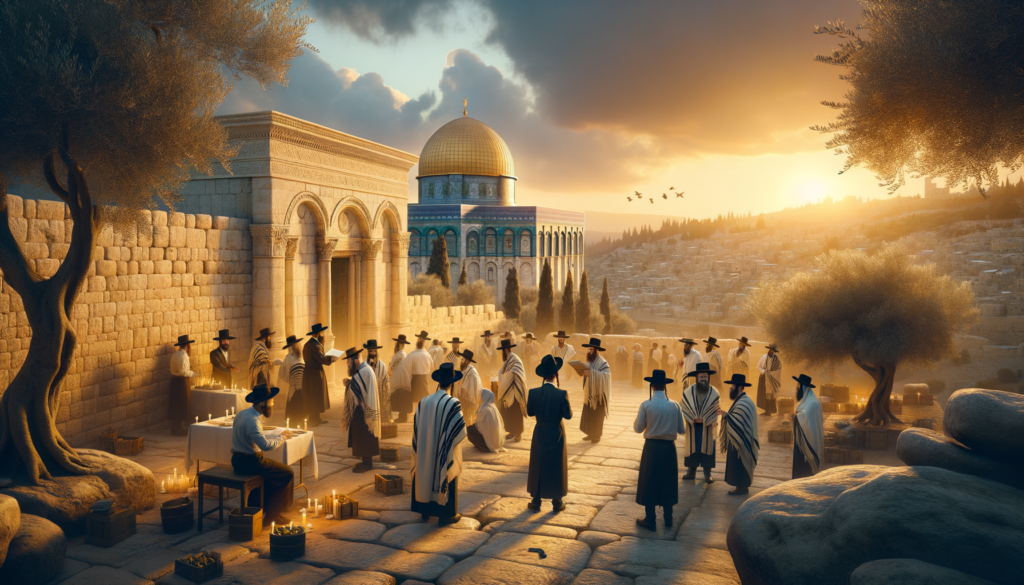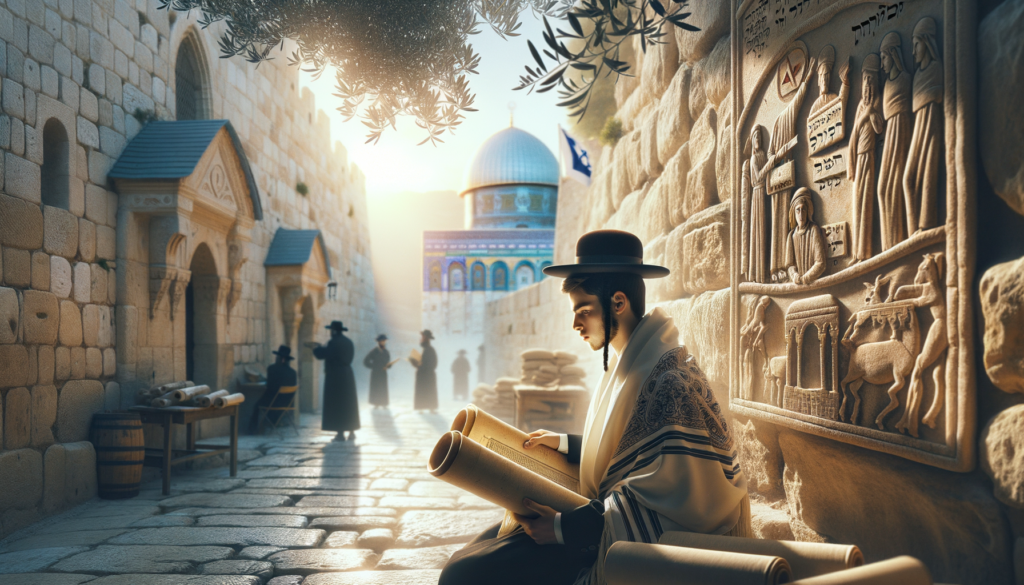A Story of Hope: The Prophet Zechariah and the Rebuilding of Jerusalem

In the heart of a recovering Jerusalem, nearly two decades after the first exiles returned from Babylon, a powerful story of hope began to unfold. The initial joy of returning home had faded, replaced by the harsh reality of rebuilding a city from its ruins. The most sacred project of all, the reconstruction of the Second Temple, had stalled amidst discouragement and opposition. It was in this challenging time that the story of the prophet Zechariah begins—a narrative not of grand battles, but of quiet strength, profound visions, and the unwavering belief in a promised future.
The Historical Setting of Zechariah’s Prophecy
Zechariah lived during the reign of Darius I of Persia, around 520 BCE. The Jewish people, recently released from Babylonian exile, had returned to a devastated Jerusalem. The walls were broken, the Temple lay in ruins, and the community faced political pressure from surrounding peoples. Though the decree of Cyrus had allowed their return, rebuilding was slow and difficult. This was the environment into which Zechariah spoke, offering divine reassurance that the Second Temple would be completed and that God had not abandoned His people.
The biblical story introduces Zechariah as a young man of priestly lineage, born in Babylon and having returned to Judah with his family. He was called to his prophetic mission alongside his contemporary, the elder prophet Haggai. While Haggai’s message was direct and urgent, Zechariah’s was one of deep, spiritual encouragement, communicated through some of the most vivid and symbolic imagery in the entire Tanakh. His purpose was to lift the spirits of the community, to remind them of their special heritage, and to reassure them that their efforts to rebuild were seen and supported.
The Extraordinary Night of Visions
The heart of Zechariah’s personal story is a single, remarkable night in which he received a series of eight visions. This narrative forms the core of the first part of his book. These were not simple dreams, but complex tableaus filled with symbolic figures: horsemen patrolling the earth, craftsmen ready to rebuild, and a golden lampstand (Menorah) glowing between two olive trees. Each vision carried a layer of meaning intended to comfort and inspire. The horsemen reported that the world was at peace, meaning the time was right to build. The golden lampstand symbolized the community as a spiritual light, sustained by its two leaders, the governor Zerubbabel and the High Priest Joshua.
Perhaps the most personal and poignant moment in Zechariah’s story is the vision concerning the High Priest, Joshua. In this vision, Joshua stands clad in soiled garments, representing the current state of the people. An angel then commands that his dirty clothes be removed and that he be dressed in clean, pure vestments. This powerful act served as a dramatic illustration of forgiveness and purification, a sign to the entire community that their past was cleansed and they could now move forward to serve in their new Temple with honor and purity. It was a deeply personal message of renewal that resonated throughout the community.
Exploring the Eight Visions in Detail
Zechariah’s eight visions each carried deep symbolic meaning. The horsemen among myrtle trees symbolized divine awareness of the world’s condition. The four horns represented oppressive nations, while the four craftsmen symbolized forces that would overthrow them. The vision of a man measuring Jerusalem reassured the people that the city would expand and flourish, protected by God’s presence. The golden lampstand and two olive trees pointed to the Spirit sustaining Israel’s leaders. The flying scroll condemned corruption and dishonesty. The woman in the basket symbolized wickedness being removed from the land. Finally, the four chariots represented God’s oversight and control over the earth. Taken together, these visions provided a mosaic of reassurance and hope.
A key part of Zechariah’s story is his message to the governor, Zerubbabel, a descendant of the Davidic line. Faced with the monumental task of rebuilding, Zerubbabel was reminded of a profound truth. Zechariah delivered a key message to him, emphasizing that the great Temple would be completed not through military might or human force, but through a spirit of divine guidance and inspiration. This famous passage has served for generations as a timeless reminder that true strength often comes from a source beyond the material world.
Zechariah in Jewish Tradition
The story of Zechariah was preserved not only in the Tanakh but also in Jewish tradition. His words were cited in rabbinic commentary and incorporated into liturgical readings. His emphasis on renewal, justice, and reliance on God’s Spirit resonated with generations facing their own hardships. Rabbinic literature often highlighted Zechariah’s combination of visionary imagery and practical encouragement as a model for prophetic leadership.
The Enduring Legacy of Zechariah
The biblical story of Zechariah is a narrative of quiet courage and profound hope. He was a prophet who did not need to shout to be heard. Instead, through rich, symbolic language and heartfelt assurances, he helped a struggling community rediscover its purpose. His story is a testament to the idea that rebuilding is as much a spiritual act as it is a physical one, and that a foundation of hope is the strongest cornerstone of all. Centuries later, his book still inspires faith communities, scholars, and artists, reminding the world that even in times of ruin, renewal is possible.




